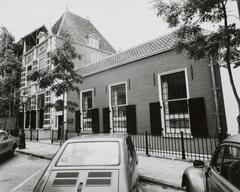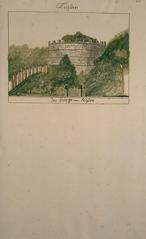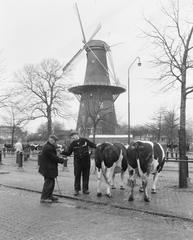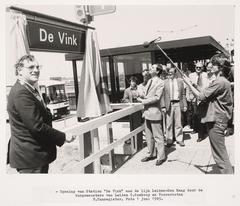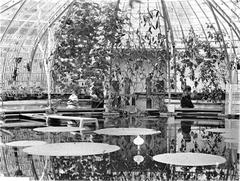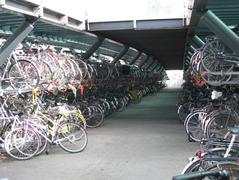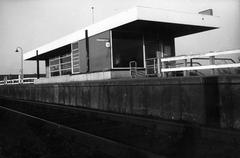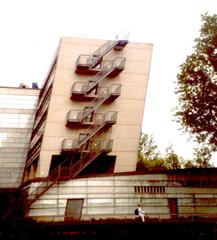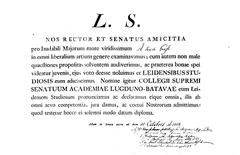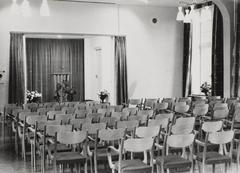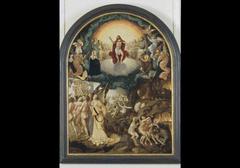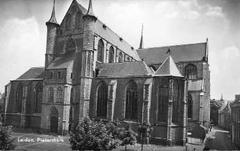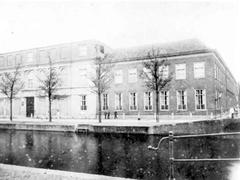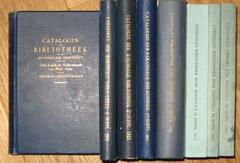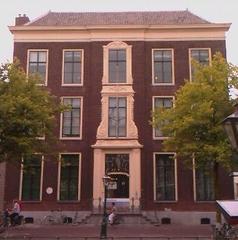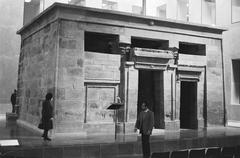
Kasteel Cronesteyn: Visiting Hours, Tickets, and Complete Guide to Leiden’s Historical Gem
Date: 04/07/2025
Introduction: Kasteel Cronesteyn’s Place in Leiden’s History
Located within the lush landscape of Polderpark Cronesteyn on the southeastern edge of Leiden, Kasteel Cronesteyn stands as a testament to centuries of Dutch history and landscape transformation. Although the castle itself no longer exists, the enduring moat, wooded Kasteelbos (castle woods), and interpretive features serve as reminders of the estate’s medieval legacy and its role in regional nobility, defense, and cultural development. The site, which originated in the early 14th century, has evolved from a feudal stronghold to an integral part of Leiden’s largest park, offering a harmonious blend of historical significance, biodiversity, and recreation.
This detailed guide provides everything you need to know about visiting Kasteel Cronesteyn: opening hours, ticketing (free entry), accessibility, historical context, travel tips, nearby attractions, and the park’s contemporary relevance. Whether you’re a history enthusiast, nature lover, or family seeking a day out, Cronesteyn is a vital part of Leiden’s vibrant cultural landscape (Mathieu in Wonderland, Sleutelstad, LeidenInside).
Table of Contents
- Historical Overview: From Medieval Stronghold to Modern Park
- Cultural and Local Significance
- Polderpark Cronesteyn: Layout, Biodiversity, and Facilities
- Visiting Information: Hours, Tickets, Accessibility, and Tips
- Events, Activities, and Community Engagement
- Frequently Asked Questions (FAQ)
- Summary and Call to Action
- References and Further Reading
1. Historical Overview: From Medieval Stronghold to Modern Park
Early Origins and Medieval Development
Kasteel Cronesteyn’s history dates to the early 1300s, when it stood as a defensive and agricultural estate under the ownership of Wouter van Haerlem. Its strategic location near the Roomburger Watering (now the Vliet) marked it as both a stronghold and a base for local nobility. Through the centuries, the estate passed between influential families, including the Van Polanen and Van Cronenburg dynasties, evolving into a prominent noble residence by the 15th century (Geschiedenis van Zuid-Holland, Wikipedia Kasteel Cronesteyn).
Transformation, Decline, and Remnants
The estate suffered during the Siege of Leiden (1573–1574), when it was demolished to prevent use by Spanish forces. Rebuilt as a stately home, it later fell into decline and was demolished in 1787, in line with the fate of many Dutch castles during the era of modernization. Today, the moat (slotgracht) and Kasteelbos (castle woods) are the most prominent survivors, enclosing the site’s historic footprint and maintaining a tangible link to Leiden’s medieval past (Sleutelstad).
2. Cultural and Local Significance
Kasteel Cronesteyn is deeply woven into Leiden’s historical and cultural fabric. The name lives on in parkland and local toponymy, while the site’s preservation is championed by heritage organizations such as Historische Vereniging Oud Leiden and Stichting Groen Cronesteyn. Efforts to grant the park municipal monument status highlight its importance in safeguarding the city’s landscape and identity for future generations (Sleutelstad).
Educational and recreational programs, interpretive signage, and occasional guided walks offer opportunities for visitors to engage with the site’s layered history, learning about feudal Leiden, Dutch water management, and the evolution of the polder landscape.
3. Polderpark Cronesteyn: Layout, Biodiversity, and Facilities
Landscape and Park Zones
Polderpark Cronesteyn, spanning up to 120 hectares, is Leiden’s largest park and a green corridor connecting city and countryside (ibnbattutatravel.com). The park’s design is a mosaic of:
- Landgoedbos (Estate Forest): Contains the Kasteelbos island with the castle’s visible foundations (wandeldingen.nl).
- Meadows and Grazing Fields: Home to traditional Dutch cattle and pastoral vistas.
- Waterways and Ditches: Key features in the Dutch polder system, supporting diverse aquatic life.
- Heron Forest (Reigerbos): A vital breeding ground for herons and spoonbills (birdingplaces.eu).
- Recreational Facilities: Includes a children’s water playground (no longer an official swimming site), picnic areas, and a visitor center (fietsnetwerk.nl).
Biodiversity Highlights
The park is a biodiversity hotspot, with over 100 bird species, wildflower meadows, and habitats for amphibians and dragonflies. Spring brings a celebrated wild garlic bloom in the woodland, drawing botanists and photographers alike (birdingplaces.eu).
Facilities and Accessibility
- Paths: Flat, well-marked trails for walking, cycling, and wheelchair access.
- Café “De Tuin van de Smid”: Eco-friendly tearoom with organic fare, terrace, and event spaces (LeidenInside).
- Visitor Center: Offers educational materials and facilities.
- Restrooms and Picnic Areas: Near the café and main paths.
- Dog Policy: Leashed dogs are welcome, with leash rules in sensitive areas.
4. Visiting Information: Hours, Tickets, Accessibility, and Tips
Opening Hours and Entry
- Park Hours: Open 24/7, year-round; daylight hours are recommended for safety and best experience (ibnbattutatravel.com, LeidenInside).
- Entry Fee: None. The park and castle grounds are free to access; no tickets or advance booking required.
Facilities Opening Times
- Café/Visitor Center: Typically open 9:00 AM–5:00 PM; check their official website for updates.
- Events and Tours: Guided walks and educational events are offered by local organizations (check IVN Leiden and Groen Cronesteyn for schedules; some may require registration or a small fee).
Getting There
- Bicycle: Dedicated cycling paths from Leiden city center; bike parking at main entrances.
- Public Transport: Local bus routes connect to nearby stops.
- Car: Limited parking near park entrances and the (now closed) Brasserie Cronesteyn; peak times may fill quickly.
Practical Tips
- Best Time to Visit: Spring for wild garlic bloom and birdwatching; summer for picnics and green landscapes.
- Accessibility: Paths are mostly flat and accessible; some woodland trails may be uneven when wet.
- No Swimming: Water playground is no longer a swimming location due to water quality (Centraal Plus).
- Guidance: Stay on marked trails and respect closed areas around the moat and castle island.
5. Events, Activities, and Community Engagement
Polderpark Cronesteyn is a hub for nature education and community activities:
- Guided Tours & Nature Walks: Led by IVN Leiden and other groups, focusing on history, flora, and fauna.
- Children’s Events: Including the “Kleine beestjes safari” (Little Creatures Safari).
- Seasonal Highlights: Wild garlic bloom in spring, bird migrations in autumn, and nature workshops throughout the year.
- Family Recreation: Sunbathing meadows, play areas, and picnic spots abound.
For event calendars and registration, visit Groen Cronesteyn and IVN Leiden.
6. Frequently Asked Questions (FAQ)
Q: What are the visiting hours for Kasteel Cronesteyn and Polderpark Cronesteyn?
A: The park is open 24 hours, seven days a week; facilities like the café and visitor center have their own hours.
Q: Is there an entrance fee or ticket required?
A: No, entry is free and open to all.
Q: Can I swim or use the water playground?
A: Swimming is not allowed due to water quality concerns (Centraal Plus).
Q: Are dogs permitted?
A: Yes, on a leash, especially in sensitive wildlife areas.
Q: Are there guided tours?
A: Yes, check local organizations for schedules and fees.
Q: Is the park wheelchair accessible?
A: Most main paths are accessible; some woodland trails can be uneven after rain.
Q: Where can I park or leave my bike?
A: Limited car parking at entrances; ample bike racks available.
Q: What is the best season to visit?
A: Spring (for wild garlic and birds) and summer (for recreation and events).
7. Summary and Call to Action
Kasteel Cronesteyn is more than a remnant of Leiden’s medieval past—it is a living, evolving landscape where history, nature, and recreation converge. The park’s free access, educational programs, and natural beauty make it one of Leiden’s top destinations for locals and visitors. Ongoing conservation efforts and the push for monument status emphasize the value placed on its heritage, ensuring its stories and landscapes endure (Sleutelstad, LeidenInside, ibnbattutatravel.com).
Plan your visit today:
- Download the Audiala app for guided audio tours and interactive maps.
- Check out related posts on Leiden’s historical sites.
- Follow us on social media for event updates and travel inspiration.
8. References and Further Reading
- Mathieu in Wonderland
- Geschiedenis van Zuid-Holland
- Wikipedia Kasteel Cronesteyn
- IVN Leidse Regio
- Sleutelstad
- LeidenInside
- ibnbattutatravel.com
- Centraal Plus
- wandeldingen.nl
- fietsnetwerk.nl
- birdingplaces.eu
- Nomads Travel Guide
Related articles:
For the latest information and to plan your trip, visit the official Polderpark Cronesteyn website.

